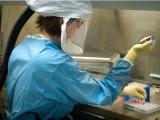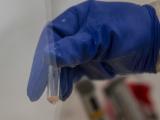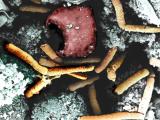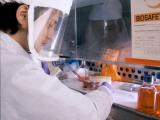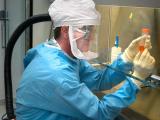Dec 7, 2001 (CIDRAP News) – Rapid tests for detecting anthrax spores on surfaces should not be used alone as the basis for public health or clinical decisions, the Centers for Disease Control and Prevention warned in today's issue of Morbidity and Mortality Weekly Report.
"CDC has not obtained validation data for rapid-assay devices," the report says. Until validation data and usage guidelines are available, polymerase chain reaction (PCR) tests and immune-based assays for detecting anthrax spores in the environment should be confirmed by culturing for Bacillus anthracis, it states.
In the CDC's recent evaluation of the Brentwood postal facility in Washington, DC, results from a PCR-based device and from the CDC culture method did not agree well, the report states. Of 107 samples, 95 (89%) were identified as negative by both methods. But of 6 samples that were positive by culture, only 2 were positive by the PCR test, and of 8 samples that were positive by PCR, only 2 were positive by culture. This comparison was not intended as a formal validation test, however, because of the small sample and other limitations.
At a CDC telephone press conference Dec 6, CDC Director Jeffrey Koplan, MD, commented that rapid tests for anthrax are probably more effective when analyzing larger amounts of material than the typical environmental swab provides. "There is probably a place for them, but it's for larger amounts of material in a clump that can be tested more readily," he said. He noted that rapid tests for anthrax are made by several manufacturers and probably have different sensitivities and specificities.
The MMWR article states that PCR- or immune-based tests do not distinguish viable from nonviable spores and thus can't be used to verify the effective of decontamination efforts that do not remove nonviable spores. The article also says that PCR methods are not approved by the Food and Drug Administration.
See also:
CDC. Notice to readers: use of onsite technologies for rapidly assessing environmental Bacillus anthracis contamination on surfaces in buildings. MMWR 2001 (Dec 7);50(48):1087
http://www.cdc.gov/mmwr/preview/mmwrhtml/mm5048a5.htm

